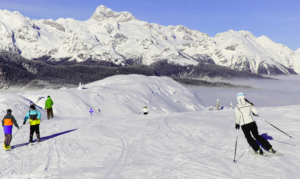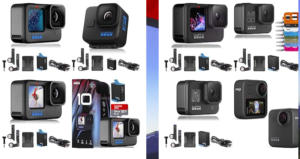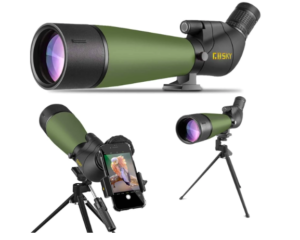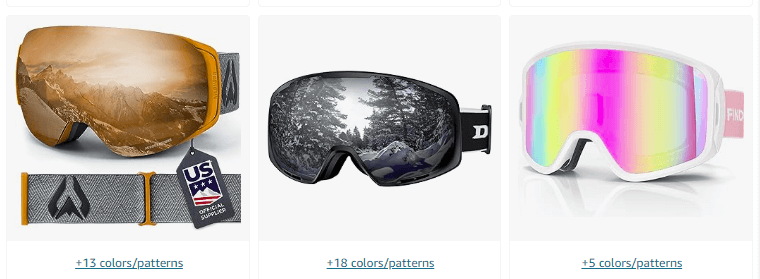
Benefits of using a goggle Ski for your ski adventures.
Skiing is an exciting winter activity that requires the proper equipment for both safety and fun, whether you’re a seasoned enthusiast or a first-time skier. Ski goggles are an important piece of equipment to have. They not only protect your eyes in the unexpected and frequently difficult alpine conditions, but they also improve your eyesight. In this tutorial, we will look at the several advantages of ski goggles and how they may improve your skiing experience.
In addition, we will provide a complete review of the essential variables to consider when selecting the ideal pair of ski goggles, ensuring that you make an informed decision adapted to your unique skiing demands. This article will help you understand the benefits of ski goggles and guide you through the choosing process, allowing you to hit the slopes with confidence and clarity, whether you’re a casual skier or a serious enthusiast.
Do you need goggles to ski? What are the benefits?
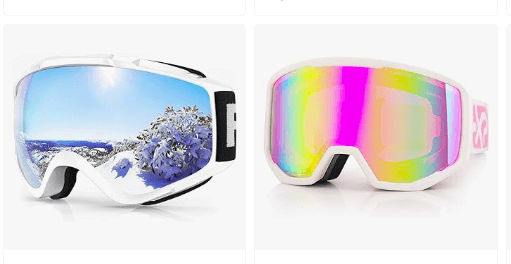
Using ski goggles provides various advantages that improve your skiing pleasure and safety:
Eye Protection:
Ski goggles act as a barrier between you and the elements, shielding your eyes from wind, snow, sleet, and debris. This safeguard is critical for preserving clear eyesight and avoiding eye strain.
UV Protection:
UV-protected lenses are commonly seen in goggles. This protects your eyes against UV rays, lowering the danger of snow blindness and long-term eye damage caused by UV exposure.
Enhanced Visibility:
Goggles are made to minimise glare from the sun and increase contrast in low-light situations. This allows you to see the landscape and hazards more clearly, which is especially crucial while skiing in a variety of weather and lighting conditions.
Comfort:
Typically, goggles are built with foam cushioning and adjustable straps to ensure a secure and comfortable fit. In cold weather, they can assist keep your face warm.
Avoid Fogging:
Many ski goggles have anti-fog coatings and ventilation systems that help to keep your vision clear even during hard sports.
Impact Resistance:
In the event of an accident or collision on the slopes, goggles can give protection. Some versions contain impact-resistant lenses, which give an added layer of protection.
Versatility:
Ski goggles are available in a variety of lens tints and forms, allowing you to select the best alternative for varied lighting circumstances and terrains.
Style:
Goggles are available in a variety of shapes and designs, enabling you to express your individual flair while being safe on the slopes.
In summary, ski goggles offer comprehensive eye protection, enhance visibility, and contribute to your overall comfort and safety while skiing. They are a valuable investment for any skier, whether you’re a beginner or an experienced enthusiast.
How to choose the right goggle ski full guide

The appropriate ski goggles are essential for a safe and fun skiing experience. Here’s a comprehensive guide on choosing the best ski goggles:
1- Think about the Lens Type:
Lens Tint:
Choose a lens tint that is appropriate for the lighting conditions where you will be skiing. Darker tints are best for bright, sunny days, whilst lighter tints or clear lenses are preferable for low-light or cloudy settings. Some goggles include replaceable lenses for further versatility.
Non-Polarized or Polarised:
Choose whether or not to use polarised glasses to decrease glare. This is especially beneficial in bright, reflecting circumstances.
Visible Light Transmission (VLT):
Examine the VLT rating, which shows how much light passes through the lens. Lower VLT percentages indicate bright circumstances, whereas larger VLT percentages indicate dark conditions.
2- Focus on Lens Shape:
Spherical or cylindrical lenses:
Spherical lenses provide a more natural field of view while reducing distortion. Cylindrical lenses are frequently less expensive, however they may have considerable distortion.
3- Anti-Fog Functions:
To retain clear vision during strenuous exertion, use goggles with anti-fog coatings or ventilation systems.
4- Comfort and fit:
Make sure the mask fits snugly and comfortably against your face. Look for foam-padded goggles with an adjustable strap.
5- UV Defence:
To protect your eyes from damaging UV rays, make sure the goggles provide 100% UV protection.
6-Helmet Compatibility:
If you wear a ski helmet, check sure your goggles are suitable and fit comfortably.
7- Fashion and Brand:
Consider your personal style and any brand preferences. Goggles are available in a variety of styles and designs.
8-Budget:
Set a budget and look for goggles with the characteristics you want within that price range.
9- Test Them Out:
Try on the goggles whenever possible to ensure they fit comfortably and give excellent vision.
10. Read Customer Reviews:
Check online reviews and ask fellow skiers for advice to acquire insight into the performance of various goggle types.
By taking these aspects into account, you may select the best ski goggles for your personal needs and skiing circumstances, improving both safety and enjoyment on the slopes.
Finally, selecting the proper ski goggles is critical for a safe and fun skiing experience. Consider lens type, shape, anti-fog features, fit, UV protection, helmet compatibility, style, budget, and personal preferences before making your selection. By carefully assessing these factors and, if feasible, trying on the goggles, you may choose the perfect pair that improves vision, comfort, and safety when skiing. Whether you choose polarised lenses, interchangeable lenses, or specialised tints, the appropriate ski goggles will make your time on the slopes more enjoyable and secure, regardless of the weather or terrain conditions.
FAQs About Goggle Ski
Are ski goggles required, or may I ski with ordinary sunglasses?
Ski goggles are suggested for skiing because they provide superior eye protection from wind, snow, and UV rays and are designed for usage in a variety of weather situations. While sunglasses can be used in some situations, goggles offer more comprehensive protection.
What do polarized ski goggles do?
Polarised ski goggles are perfect for bright, sunny days on the slopes because they prevent glare. By reducing reflected sunlight from snow and ice, they increase sight and minimise eye strain.
Can I wear my prescription glasses with ski goggles?
Some ski goggles are intended to be worn over prescription glasses, while others have prescription inserts. To achieve a comfortable fit, look for goggles that match your individual demands.
How do I keep my ski goggles from fogging?
Choose goggles with anti-fog coatings or ventilation systems to avoid fogging. Check for good fit, prevent obscuring your face with a scarf, and avoid overheating. If they fog, avoid touching the inner lens, since this might damage the anti-fog coating.
What features should I look for in low-light ski goggles?
Choose goggles with a high Visible Light Transmission (VLT) % and lenses intended for flat or overcast light in low-light circumstances. In low-light circumstances, yellow or rose-colored lenses can improve contrast.
Are there goggles designed specifically for particular skiing disciplines, such as downhill skiing and snowboarding?
While some goggles are promoted exclusively for snowboarding or skiing, many goggles are multipurpose and may be used for both activities. The decision is frequently influenced by your personal tastes and style.
Do ski goggles offer UV protection?
Yes, the majority of ski goggles include UV protection. To protect your eyes from damaging UV rays, look for goggles with 100% UV protection.
Can I use ski goggles when doing other outdoor activities?
Yes, ski goggles may be used to protect your eyes from the weather and UV exposure throughout a variety of outdoor activities such as snowmobiling, hiking, and even cycling.
How should I clean and care for my ski goggles?
Use a microfiber towel or goggle-specific lens wipes to clean your ski goggles. To keep anti-fog coatings intact, avoid touching the inner lens. When not in use, keep them in a soft pouch to avoid scratching.
Related

